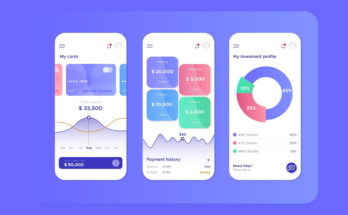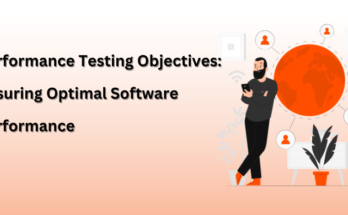Java is one of the most widely used development technologies and is even considered the best by many. Be it the platform independence it offers developers to write code once and run it on various platforms or extensive libraries and frameworks that provide developers with a rich ecosystem of tools and resources to streamline development, it is undoubtedly one of the most versatile solutions.
And with all that potential, Java offers many advanced features and technologies for developing high-performance applications. These advanced features enable developers to foster robust, scalable, and efficient Java app development that can handle complex business requirements and deliver superior performance.
Besides, Java’s strong focus on security and its built-in features for exception handling makes it a reliable and robust choice for building secure applications. On top of that, Java’s large community of developers and its continuous updates ensure ongoing support, innovation, and a wealth of learning resources for developers of all skill levels.
However, it is the right selection of tools, technologies, and approaches that define the success of any Java application development project. In this blog, we will explore key technologies and best practices that can be leveraged in advanced Java development to create high-performance applications.
Harnessing Java Technologies for Advanced Development
The use of Java technologies, such as Spring Framework, Hibernate, JavaFX, and Java EE, complements advanced Java development by providing powerful libraries, frameworks, and tools.
The right access and approach to technologies not only allows rapid development but simplifies complex tasks, enhances performance, facilitates database integration, enables GUI development, and supports distributed computing. Here are some key Java technologies that developers and Java app development companies could foster when they need to enrich the capabilities of advanced Java applications:
1. Java Virtual Machine (JVM) Optimization
The JVM plays a crucial role in executing Java applications, and optimizing its performance can significantly enhance the overall application performance. JVM tuning involves configuring parameters such as memory allocation, garbage collection, and thread management to maximize resource utilization. Techniques like adjusting heap sizes, using appropriate garbage collection algorithms, and fine-tuning thread pools can significantly boost the application’s performance.
2. Multithreading and Concurrency
Java provides robust support for multithreading and concurrency, allowing developers to write highly scalable applications that can efficiently utilize modern multi-core processors by leveraging features like Java Util Concurrent packages, synchronized blocks, and atomic variables, developers can effectively manage concurrent access to shared resources, minimize synchronization overhead, and maximize throughput.
3. Asynchronous Programming
Asynchronous programming is crucial for building responsive and high-performance applications. Java provides excellent support for asynchronous programming through features such as Completable Future, which allows developers to write non-blocking, asynchronous code. By utilizing asynchronous techniques, developers can avoid blocking operations and efficiently use system resources, leading to improved application performance.
4. Performance Profiling and Tuning
Profiling tools play a vital role in identifying performance bottlenecks and optimizing Java applications. Tools like Java VisualVM, JProfiler, and YourKit enable developers to analyze CPU usage, memory allocation, and thread behavior. By identifying and optimizing performance hotspots, unnecessary object creation, and memory leaks, developers can significantly improve the overall performance of their applications.
5. Just-In-Time (JIT) Compilation
Java’s Just-In-Time (JIT) compilation mechanism dynamically compiles bytecode into native machine code at runtime, optimizing the performance of frequently executed portions of code. Developers can achieve substantial performance gains in critical sections of their applications by using advanced JIT compilation techniques, such as method inlining and loop unrolling.
6. High-Performance Data Structures and Libraries
Java provides a wide range of high-performance data structures and libraries that can significantly boost application performance. For example, Java Util Concurrent package offers concurrent data structures like Concurrent HashMap and ConcurrentLinkedQueue, which are designed explicitly for high-concurrency scenarios. Additionally, libraries like Apache Commons Collections and Google Guava provide optimized data structures and utilities that can improve performance and memory efficiency.
7. Caching and Memorization
Caching is a powerful technique for improving application performance by storing frequently accessed data in memory. Java offers various caching frameworks, such as Ehcache and Caffeine, which provide features like automatic eviction policies, cache coherence, and expiration control. By strategically applying caching and memorization techniques, developers can minimize expensive computations and reduce response times for Java application development.
8. Performance Testing and Benchmarking
Performing comprehensive performance testing and benchmarking is crucial to ensure the effectiveness of optimizations and improvements. Tools like Apache JMeter and Gatling enable developers to simulate real-world scenarios, measure system response times, and identify performance bottlenecks. By running performance tests regularly, developers can track the impact of changes and make informed optimizations.
Since we have gone through all the details surrounding Java technologies, it is vital that the right approach and process must be adopted to yield the necessary output. Let us quickly walk through all the Java app development best practices that can help foster contemporary development.
Best Practices for Advanced Java Development
When you are aiming for robust, maintainable, and efficient applications, adopting best practices for advanced Java development becomes crucial. From yielding code readability, scalability, and reusability, aligning your Java Android development or iOS development project allows you to gain consistency, reduce bugs, and enhance collaboration among developers.
With that being said, let us quickly dive through some key best practices that could help Java developers to experience improved productivity and higher-quality software solutions.
1. Follow Object-Oriented Principles: It usually needs developers to utilize encapsulation, inheritance, and polymorphism to create modular, maintainable, and extensible code.
2. Design for Scalability: Since scalability is a necessary objective during Java app development, using design patterns like Singleton, Factory, and Observer to build architectures can handle increasing workloads.
3. Optimize Database Access: One can even utilize connection pooling, batch processing, and indexing techniques to minimize database roundtrips and enhance data access performance.
4. Use Efficient Algorithms and Data Structures: Choose appropriate algorithms and data structures based on the problem domain to optimize time and space complexity.
5. Minimize I/O Operations: To develop more reliable Java apps, developers must aim to reduce file I/O, network calls, and database transactions to minimize latency and improve application responsiveness.
6. Implement Caching Strategies: When you look forward to creating lag-free apps, identify frequently accessed data and apply caching techniques to reduce response times and alleviate the load on resources.
7. Monitor and Fine-Tune Performance: Continuously monitoring application performance, collecting metrics, and fine-tuning configurations could help optimize resource utilization and improve responsiveness.
8. Regularly Update Dependencies: To ensure smooth Java app development, keep Java frameworks, libraries, and dependencies up to date to leverage performance improvements and security patches.
Also Read: The Impact of Mobile Apps on Businesses in the US
The Crux
Advanced Java development offers a wide range of powerful features and technologies for building high-performance applications. By leveraging key technologies like JVM optimization, multithreading, asynchronous programming, and performance profiling, developers can create applications that deliver exceptional performance.
However, following best practices, such as designing for scalability, optimizing database access, and utilizing efficient algorithms and data structures, can significantly enhance application performance. Overall, with Java’s extensive ecosystem of tools and libraries, developers could take control of the resources to build robust and monetizable applications that meet the demands of modern software systems.




